You searched for: 代google开户竞价投放靠谱【TG飞机:@bapingseo】金華外貿網站推廣【TG电报:@bapingseo】西非谷歌霸屏推广【Telegram:@bapingseo】ag亚博网站tvt体育app下载?w5RzWK/844171.html
<< Previous | Displaying results 151-200 of 393 for "代google开户竞价投放靠谱【TG飞机:@bapingseo】金華外貿網站推廣【TG电报:@bapingseo】西非谷歌霸屏推广【Telegram:@bapingseo】ag亚博网站tvt体育app下载?w5RzWK/844171.html" | Next >>
-
The Holocaust in Macedonia: Deportation of Monastir Jewry
ArticleIn March 1943, Bulgarian authorities transported the entire Jewish community of Monastir to a transit camp from which they were deported to Treblinka.

-
Uckermark Youth Camp
ArticleThe Uckermark camp was one of the so-called youth protection camps that the Nazi regime established for young people who were alleged to have strayed from Nazi norms and ideals.
-
Lackenbach (Roma internment and transit camp)
ArticleThe Lackenbach internment and transit camp for Roma, located in what had been eastern Austria, was a departure point for deportations to Lodz and Auschwitz.
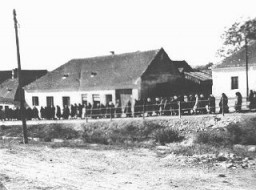
-
Wagner-Rogers Bill
ArticleThe Wagner-Rogers Bill proposed admitting 20,000 refugee children to the US from the Greater German Reich in 1939–40, but did not become law. Learn more

-
Elie Wiesel
ArticleElie Wiesel was a human rights activist, author, and teacher who reflected on his experience during the Holocaust in more than 40 books. Learn more.

-
Chaya Medalion
ID CardChaya and her brother and two sisters were raised in a religious, Yiddish-speaking home in the town of Kozienice, situated in east central Poland near a large birch forest. As a child, Chaya learned Hebrew. She attended Polish public schools and graduated at 14. Her father owned a factory that produced handmade shoes. 1933-39: Chaya was active in the Zionist movement, through which she met her boyfriend, Lewek Szabasson. Chaya and Lewek would stroll on Kozienice's main promenade which was at the…
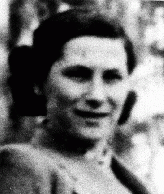
-
Vita Rivkina
ID CardBecause both of her parents had died by the time Vita was 5 years old, she went to live with her cousins. At the age of 18, Vita married Iosif Rivkin, and the couple moved to Minsk where they raised three daughters--Hacia, Dora and Berta. 1933-39: By the early 1930s, the Rivkin family lived on Novomesnitskaya Street in central Minsk, near the Svisloch River. In the 1930s the girls attended Soviet state schools and were members of the Soviet youth organization, Young Pioneers. By the late 1930s Minsk was…

-
Israel Yitzak Kisielnicki
ID CardThe youngest of three children, Israel Yitzak was born to Jewish parents living 35 miles east of Warsaw in the small, predominantly Jewish town of Kaluszyn. Israel's mother was a housewife, and his father was a merchant who often traveled on business, by horse and wagon, to Warsaw. Israel attended public school and also received religious instruction. 1933-39: When Germany invaded Poland several days ago, many kids Israel's age, afraid of what would happen if the Germans occupied Poland, fled to the USSR,…

-
Betje Jakobs
ID CardBetje and her sister Saartje were born to Jewish parents in the town of Zwolle in the Netherlands' north central province of Overijssel. Betje was known affectionately as "Bep" to her friends. The Jakobs family owned a successful sporting goods store. 1933-39: As a young girl, Betje enjoyed playing the piano, knitting and tennis. At age 16, while still in secondary school, she began to date Maurits Wijnberg, a boy two years her senior, whose family owned Zwolle's Hotel Wijnberg. 1940-42: The Germans…
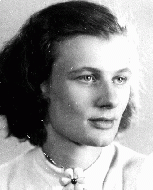
-
Rosalia Wourgaft Schatz
ID CardRosalia was raised by Jewish parents in the small, predominantly Jewish industrial city of Tulchin in southwestern Ukraine. She married Aaron Schatz, and together they raised four children in the city of Odessa. In 1919, when her family was grown, Rosalia and her daughter Ludmilla immigrated via Romania to France after Aaron was killed during the Russian civil war. 1933-39: Rosalia settled in Bagneux, a suburb of Paris. She spoke only Russian and Yiddish and found Paris to be a different world from the…
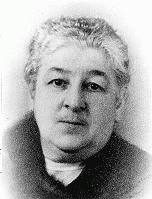
-
Benjamin Frydmacher
ID CardBenjamin was born in the industrial city of Lublin to a large, Yiddish-speaking Jewish family. He attended public school, and after he graduated at the age of 14, he apprenticed at the same tannery where his father was the tannery master. 1933-39: After completing his apprenticeship, Benjamin became the assistant tannery master. After his father's death in 1938, he became the production tannery master. He and his wife, Gucia, lived with his mother at 50 Lubartowska Street. In 1938 the Frydmachers had a…
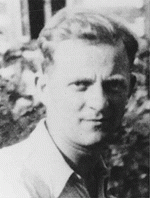
-
Benjamin Soep
ID CardBenjamin, called "Benno" by his family and friends, grew up in a religious Jewish household in Amsterdam. Benno's father, a successful diamond manufacturer, was president of the Amsterdam Jewish community. Benno had two younger sisters and enjoyed collecting stamps. 1933-39: After he obtained some work experience in a department store, Benno joined his father in the diamond business. Benno adhered strictly to Jewish law. He loved tennis and skiing, and in 1938, while skiing in Switzerland, he met a girl…
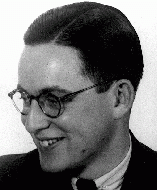
-
Frederick Dermer
ID CardFrederick was born to a Jewish family in the Austrian capital of Vienna. His father died when he was a baby, and he and his mother moved into an apartment with Frederick's widowed grandfather. As a young boy, Frederick attended a Viennese public school. 1933-39: Frederick was a rambunctious child. Once, when his grandfather was baby-sitting, Frederick used a silk lampshade as a "parachute," and jumped from the top of the wardrobe closet. That was the last time Frederick's grandfather would baby-sit.…

-
Moise Gani
ID CardMoise's family were Romaniot Jews, a group that had lived in Greek cities and the Balkans for 1,100 years. In the early 1920s Moise's family moved to Italy, where his father tried to find work. Moise attended school, and when his family returned to Greece after two years, he remained in Italy to complete school. When Moise returned to Preveza at age 17, he had forgotten Greek. 1933-39: Moise worked as a bookkeeper and administrator at the local electric company in Preveza, and he lived with his parents.…
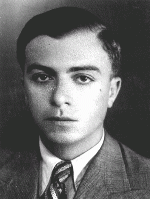
-
Samuel Zoltan
ID CardSamuel's parents immigrated to Palestine when he was very young. They lived in Rishon le Zion, the first settlement in Palestine founded by Jews from outside of Palestine. After graduating from high school, Samuel became active in a movement challenging the British mandate in Palestine. 1933-39: Samuel was expelled from Palestine in 1936 because of his outspoken criticism of the British mandate. He went to France and then to Spain just after the civil war began. Samuel fought for three years with the…

-
Wolf Wajsbrot
ID CardWhen Wolf was a young boy, his family moved to France to escape Poland's economic instability and growing antisemitism. Soon after they settled in Paris, his father found work in construction, and Wolf started elementary school. 1933-39: Paris was home to Wolf, but he loved to listen to his parents reminisce about autumns in Krasnik and journeys to Lublin. Hitler invaded Poland in 1939. The Wajsbrots learned of the death camps and mass deportations of Jews. Wolf's parents no longer spoke of the past. Wolf…
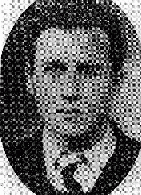
-
Herman Judelowitz
ID CardHerman was the oldest of nine children born to a Jewish family in the Latvian village of Aizpute. He was a World War I veteran, and after the conflict, in 1918, he fought for the establishment of a free Latvian republic. Two years later he married Sarah Gamper and they settled in the city of Liepaja, where they owned a shoe store. By the late 1920s they had two daughters, Fanny and Jenny. 1933-39: Herman designed patterns for the uppers of shoes, which he used to fashion into finished shoes. His shoe…
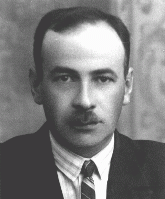
-
Rachel Lea Galperin
ID CardRachel, born Rachel Karpus, was born to a Jewish family in the northeastern Polish city of Vilna. At the age of 16, Rachel married Reuven Galperin, a typesetter for a Jewish newspaper in the city, and the couple subsequently had 16 children. Only nine of the children lived to the 1930s. 1933-39: In addition to caring for her children, Rachel also operated a small grocery on Nowigorod Street. In 1938 Rachel's husband died. One year later, on September 1, 1939, Germany invaded Poland and 17 days after that…
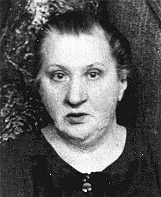
-
Hans Vogel's diary entry on boarding the refugee ship Nyassa
ArtifactHans Vogel and his family fled Paris following the German invasion. They eventually received papers allowing them to immigrate to the United States. During this time, Hans kept a diary that contains postcards, hand-drawn maps, and other illustrations of their flight. This page describes the lead-up to their departure for the United States, from Lisbon, on the Nyassa. Hans was born in Cologne, Germany on December 3, 1926. The family left Germany in 1936, settling in Paris. They remained there until the…

-
Hans Vogel's diary entry describing the voyage to the United States
ArtifactHans Vogel and his family fled Paris following the German invasion. They eventually received papers allowing them to immigrate to the United States. During this time, Hans kept a diary that contains postcards, hand-drawn maps, and other illustrations of their flight. This page describes the voyage on board the Nyassa to the United States. Hans was born in Cologne, Germany on December 3, 1926. The family left Germany in 1936, settling in Paris. They remained there until the outbreak of World War II.…
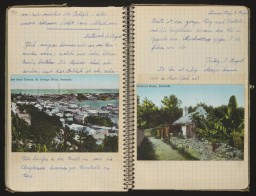
-
Hans Vogel's diary entry on arriving in New York
ArtifactHans Vogel and his family fled Paris following the German invasion. They eventually received papers allowing them to immigrate to the United States. During this time, Hans kept a diary that contains postcards, hand-drawn maps, and other illustrations of their flight. This page describes arriving in New York. Hans was born in Cologne, Germany on December 3, 1926. The family left Germany in 1936, settling in Paris. They remained there until the outbreak of World War II. Hans's father, Simon, was interned…
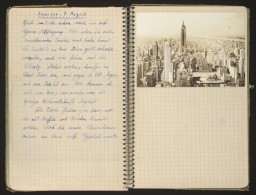
-
Curt Egon Rosenberg
ID CardCurt was the oldest of three children born to a Jewish family in the famous German university city of Goettingen. His father owned a linen factory that had been in the family since it was founded by Curt's grandfather. Goettingen had a small Jewish population, with only one synagogue. Curt attended public school in the city. 1933-39: The Nazis came to power in 1933. A year later, the Rosenbergs' factory was seized and the family was forced to move to Hamburg. Because he was Jewish, Curt was arrested in…
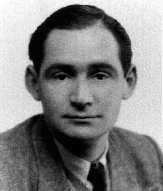
-
Frances Perkins
ArticleFrances Perkins was FDR's secretary of labor. Learn about her role in the rescue of European Jews whose lives were threatened by the Nazi regime.

-
Beifeld album page outlining the labor service's roles in the war effort
ArtifactA page of drawings illustrating the contribution of Jewish Labor Servicemen to the war effort. At the top: "The different platoons work hard at the battle front and in the no man's land [between the armies]. They actively participate in the fighting. They carry ammunition to the Hungarian soldiers." In the middle: "They defuse land mines. They bury the dead, including those that had been left unburied from the winter campaign. They carry soldiers wounded on the front lines to safety." At the bottom: "For…
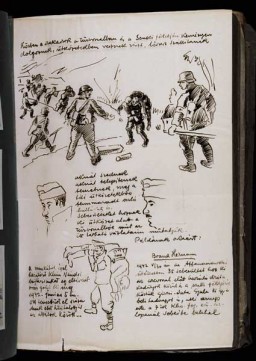
-
Buchenwald concentration camp
FilmClip from George Stevens' "The Nazi Concentration Camps." This German film footage was compiled as evidence and used by the prosecution at the Nuremberg trials.
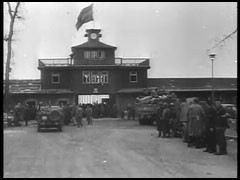
-
Liberation of Auschwitz: Child survivors
FilmSoviet military footage showing children who were liberated at Auschwitz by the Soviet army in January 1945.
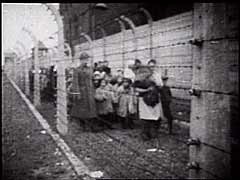
-
Books burn as Goebbels speaks
FilmIn their drive to rid the country of all that they deemed "un-German," the Nazis publically burned books in cities across Germany. Here in front of the Opera House in Berlin, a chanting crowd burns books written by Jews and leftist intellectuals. Joseph Goebbels, Hitler's minister of propaganda and public information, speaks of the intended "reeducation" of Germany.

-
Doriane Kurz describes appell (roll call) in Bergen-Belsen
Oral HistoryDoriane's Jewish family fled to Amsterdam in 1940, the same year Germany occupied the Netherlands. Her father died after deportation to Auschwitz. After their mother was seized, Doriane and her brother hid with gentiles. The three were reunited at Bergen-Belsen, where they were deported via Westerbork. They were liberated during the camp's 1945 evacuation, when Doriane was 9. Her mother died of cancer soon after Doriane helped her recover from typhus. Doriane and her brother immigrated to the United States.
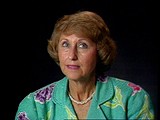
-
Irene Weber describes how obtaining a work card could offer protection from deportation
Oral HistorySeparated from her family, Irene was deported from the Sosnowiec ghetto to the Gleiwitz camp in March 1943. After a death march and an attempted escape from a transport out of Gleiwitz, Irene was imprisoned in Prague, then Theresienstadt, where as a political prisoner she was sentenced to death by starvation. For the five months before liberation, she shared a cell with 59 ailing women. Irene was the sole member of her Jewish family to survive the war.

-
John Dolibois describes attitude of captured Nazi leaders
Oral HistoryJohn Dolibois immigrated to the United States in 1931 at the age of 13. After graduating from college, Dolibois joined the 16th Armored Division of the US Army. Due to his German language skills, he became involved in military intelligence. He returned to Europe in this capacity toward the end of World War II. Dolibois interrogated German prisoners of war, including leading Nazis, in preparation for the postwar trials of war criminals. He was later appointed US ambassador to Luxembourg, his birthplace.
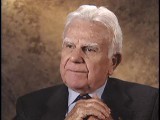
-
Lilly Appelbaum Malnik describes the process of registration in Auschwitz
Oral HistoryGermany invaded Belgium in May 1940. After the Germans seized her mother, sister, and brother, Lilly went into hiding. With the help of friends and family, Lilly hid her Jewish identity for two years. But, in 1944, Lilly was denounced by some Belgians and deported to Auschwitz-Birkenau via the Mechelen camp. After a death march from Auschwitz, Lilly was liberated at Bergen-Belsen by British forces.
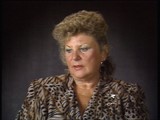
-
Studio Portrait of Theresia Seibel
PhotoTheresia Seibel, born in 1921, was a member of the Sinti froup (Sinti and Roma are two main groups that make up the Romani, or Gypsy, ethnic minority). Theresia joined Germany’s Wuerzburg Stadttheater at age 16, performing as a singer and dancer. In 1941, she defied Gestapo orders to be sterilized and was three months pregnant with twins by the time she was called in for the procedure. She was allowed to continue the pregnancy on the condition that the babies would be given at birth to the clinic…
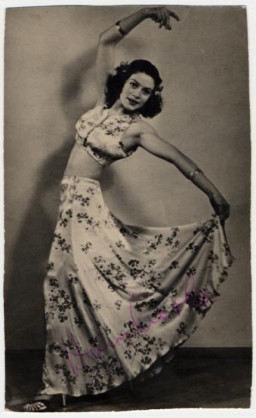
-
About Life after the Holocaust
ArticleAfter WWII and the fall of the Nazi regime, Holocaust survivors faced the daunting task of rebuilding their lives. Listen to six survivors tell their stories.
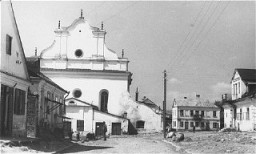
-
Theresienstadt: Establishment
ArticleLearn about the establishment of the Theresienstadt camp/ghetto, which served multiple purposes from 1941-45 and had an important propaganda function for the Germans.

-
Women in the Third Reich
ArticleDespite the Nazi Party's ideology of keeping women in the home, their roles expanded beyond wives and mothers.

-
Kindertransport, 1938–40
ArticleKindertransport refers to a series of rescue efforts between 1938 and 1940 that brought thousands of refugee children to Great Britain from Nazi Germany.
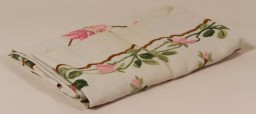
-
Hermann Ludwig Maas
ArticleHermann Ludwig Maas, a Protestant pastor in Heidelberg, Germany, was a rescuer and clergyman who stood in solidarity with the Jewish community.
-
Theresienstadt
ArticleThe Theresienstadt camp/ghetto served multiple purposes during its existence from 1941-45 and had an important propaganda function for the Germans. Learn more.

-
Berlin
ArticleBerlin was home to Germany’s largest Jewish community. It was also the capital of the Third Reich and the center for the planning of the "Final Solution."

-
Hungary before the German Occupation
ArticleTowards the end of 1940, Hungary joined the Axis powers and invaded Yugoslavia and the Soviet Union. Learn more about Hungary before the German occupation.
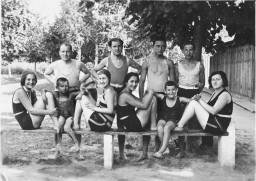
-
Polish Victims
ArticleIn September 1939, the Germans launched a campaign of terror intended to destroy the Polish nation and culture. Learn more about the German occupation of Poland.

-
Polish Jewish Refugees in Lithuania, 1939–40
ArticleLearn more about Polish Jewish refugees that relocated to Lithuania between 1939-1940.
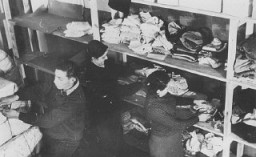
-
Nazi Terror Begins
ArticleAfter rising to power in January 1933, the Nazis began the process of moving Germany from a democracy to a dictatorship. Learn more.

-
Gardelegen
ArticleIn April 1945, US troops encountered a barn on the outskirts of Gardelegen where the SS and its accomplices had massacred over 1,000 concentration camp prisoners.

-
Tower of Sephardic faces: The Jewish community of Monastir, Macedonia
ArticleOn March 11, 1943, over 3,000 of Monastir’s Jews were deported to Treblinka. Learn more about the history of the community and postwar memorialization.

-
The Evian Conference
ArticleAt the July 1938 Evian Conference, delegates from nations and organizations discussed the issue of Jewish refugees fleeing persecution in Nazi Germany. Learn more
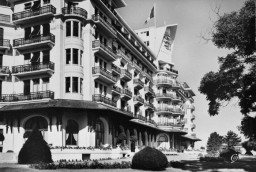
-
Locating the Victims
ArticleThe Germans and their collaborators used paper records and local knowledge to identify Jews to be rounded up or killed during the Holocaust.

-
Mobile Killing Squads
ArticleLearn more about Nazi mobile killing squads (Einsatzgruppen) killing activities in the Soviet Union during World War II.

-
The Survivors
ArticleSurvivors faced huge obstacles in rebuilding their lives after the devastation of the Holocaust years. Learn about some of the challenges they faced.

-
Rescue and Resistance
ArticleWhile some European Jews survived the Holocaust by hiding or escaping, others were rescued by non-Jews. Learn more about these acts of resistance.

